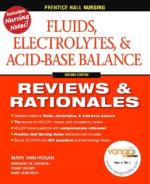|
This section contains 289 words (approx. 1 page at 300 words per page) |
pH refers to the amount of acid or base in an aqueous solution. It comes from a French word meaning "hydrogen power", or essentially the strength of the hydrogen ion. pH is defined as the negative log (in base 10) of the hydrogen ion concentration. A neutral solution has a pH of 7.0, acidic solutions are those with a pH less than 7, and basic solutions are those greater than 7. Since this is a logarithmic scale, the difference between each increment is a factor of 10. Thus, a solution of pH 5.0 is 10 times more acidic than a solution of pH 6.0, and 100 times more acidic than the solution of pH 7.0. Battery acid has a pH of nearly 1.0, normal stomach acidity ranges from 1.0 to 3.0, lemon juice is around 2.3, vinegar and soft drinks about 3.0, fresh tomatoes about 4.0, black coffee about 5.0, pure water 7.0, blood 7.3-7.5, sea water 7.8-8.3, baking soda and bleach 9.0, household ammonia and detergents 10.5-12.0, hair remover 12.5, and oven cleaner 13.5.
The pH of a solution can be measured using an electronic pH meter with electrodes, and by various indicators which change color depending upon the pH of the solution. For example, phenophthalein is colorless in an acidic solution but turns pink around pH 8.3.
Normal rain water has a pH of approximately 5.6 due to the reaction of carbon dioxide gas and water vapor in the atmosphere, producing weak carbonic acid. Acid rain is rain water with a pH less than this, and areas receiving high amounts of nitrous oxide and sulfur dioxide emissions receive more acidic rain water due to the production of the stronger nitric and sulfuric acids in the atmosphere. Acid deposition (both wet and dry) can cause considerable damage to unbuffered aquatic and terrestrial environments. It can also erode marble statues.
|
This section contains 289 words (approx. 1 page at 300 words per page) |


